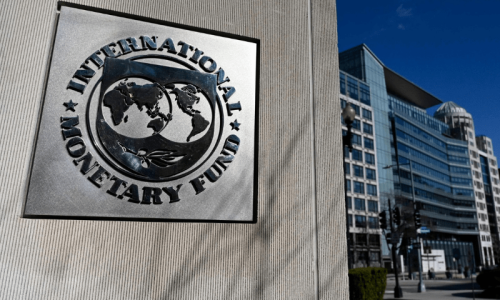Over the last five years, food inflation, as measured by the Pakistan Bureau of Statistics, has accumulated to more than 114 per cent, compounding by 22pc on an annual basis and exceeding overall inflation levels.
Food inflation’s impact and affordability play a critical role in determining wages, as expenditure on food makes up more than 47.1 per cent of the poorest quintile and 44.5pc of the subsequent quintile — as per the Household Integrated Economic Survey 2018-19.
As food expenditures take up almost half of any household’s income, the space for expenditure on other essentials is constrained, resulting in households making compromises on health and education. Taming food inflation and ensuring price stability remains critical in tampering with inflation expectations while opening up space for households to increase expenditure in other areas.
A review of the consumption basket of the poorest quintiles shows that almost 28pc of all food-related expenditure is on dairy products and poultry, followed by cereals at 15pc, vegetables at 9pc, and edible oil at 7.5pc. Due to a distortionary support pricing regime in wheat, the increase in the price of wheat over the last five years has mimicked the depreciation of the rupee-dollar parity, signalling the price setting at import parity levels due to smuggling.
The poorest households are the most susceptible to a weakening rupee despite local production of basic edibles
Similarly, feed is often largely imported for dairy products and poultry, exposing the same depreciation to rupee-dollar parity. Import bans a few quarters back led to a sharp increase in price of both dairy products, and eggs, resulting in escalation in prices.
Due to such distortionary market mechanisms, the most critical consumption goods remain exposed to rupee-dollar parity, making the poorest households most susceptible to a weakening rupee despite local production of such goods. Similarly, edible oil is primarily imported into the country, exposing households to currency depreciation and volatility in commodity prices.
As food inflation takes root, and inflationary expectations are embedded, any weaknesses in the supply chain exacerbate food inflation. Seasonal volatility in prices of tomatoes, which over the last fifteen months has fluctuated between a high of Rs120 per kg and a low of Rs40 per kg, clearly demonstrates the supply constraints associated with perishable goods.
A contractionary monetary policy can destroy demand and caloric consumption
Food inflation cannot be contained by blunt monetary policy tools and can only be fixed through improvement in supply linkages, yield improvement, and affordable storage solutions. A knee-jerk reaction to fixing prices often makes things worse, as any surplus is smuggled when international prices are high or rots when international prices are low, resulting in a loss in consumer welfare in both cases.
As per the Household Integrated Economic Survey 2018-19, a household in the poorest quintile spent Rs. 10,095 per month on food in 2018-19, making up 58pc of minimum wage. Adjusting the same for food inflation, the same would now be in the range of Rs21,690 per month, making 68pc of minimum wage.
Expenditure on food relative to minimum income for the poorest quintile, or those even making minimum wage, effectively makes up 68pc of income. As basic dietary requirements make up almost half of a household’s consumption basket, tapering and flattening food prices ought to be the most pressing task for monetary stability and improvement in households’ overall purchasing power.
A goal of improving purchasing power can only be realised if food prices, which make up almost half of consumption of the poorest households, are stabilised. More importantly, their link with the weakening rupee is broken, whether through improved yields, better supply linkages, or better market access.
The human cost of inflation is transmitted through food prices, as any increase erodes fiscal resources that can be spent on health, education, and other needs while further reducing calorie intake, even on an absolute basis.
The notion of food security should not only be restricted to indigenous production but also to the affordability of the same. We may have a misplaced sense of pride in being an agrarian economy, but in terms of affordability, even the most basic staples trade close to import parity prices, making the same unaffordable for a vast majority of the country. There is no easy fix to ensure stability in the price of basic staples, and that requires agrarian reforms across the board.
Any policy must consider the consumption basket and how input costs can be tapered to ensure price stability. Reducing the volatility in inflation and seasonal swings associated with food inflation necessitates deep-rooted supply-side interventions.
Such interventions can enable better storage facilities, transition towards a market-oriented pricing mechanism rather than a distortionary fixed price, and, more importantly, encourage import substitution of key consumption and intermediary products to weaken the linkage between currency depreciation and food prices.
The goal for any mid-to-long-term policy ought to be to keep food inflation at low-to-mid single digits while gradually reducing the share of expenditure on food relative to a household’s income. Such a holistic intervention can open up fiscal space for households to not just save more but also to spend in other areas of the economy and elevate overall lifestyle preferences,
Food inflation is often ignored as a consequence of natural climatic or commodity cycles. It is important that it is viewed through the lens of household expenditure and how stabilising the same stabilises household incomes and budgets.
A contractionary monetary policy can destroy demand and caloric consumption, but supply–side interventions can facilitate improvement in caloric consumption while making it affordable.
The writer is an assistant professor at the Institute of Business Administration, Karachi
Published in Dawn, The Business and Finance Weekly, July 15th, 2024















































Dear visitor, the comments section is undergoing an overhaul and will return soon.